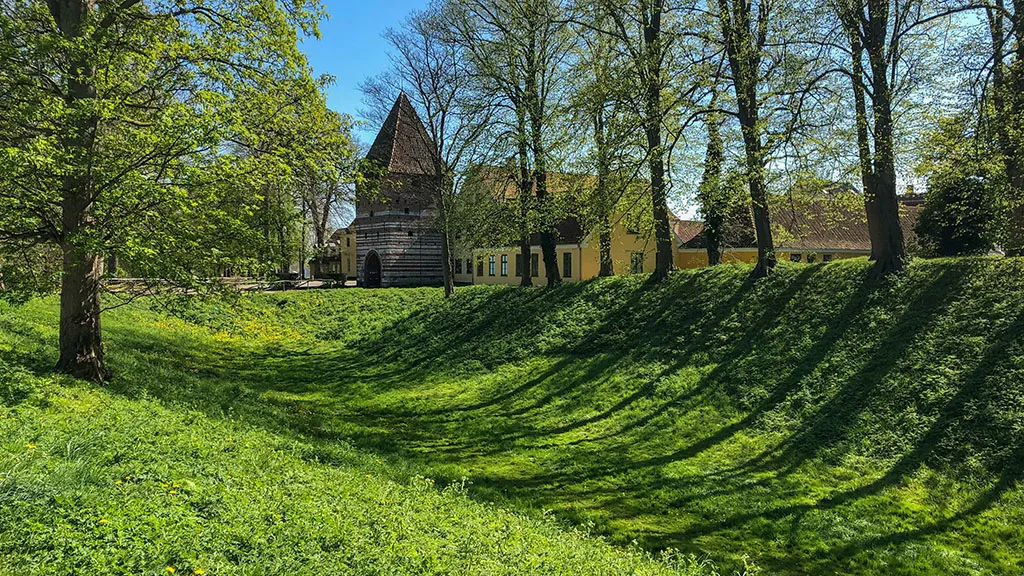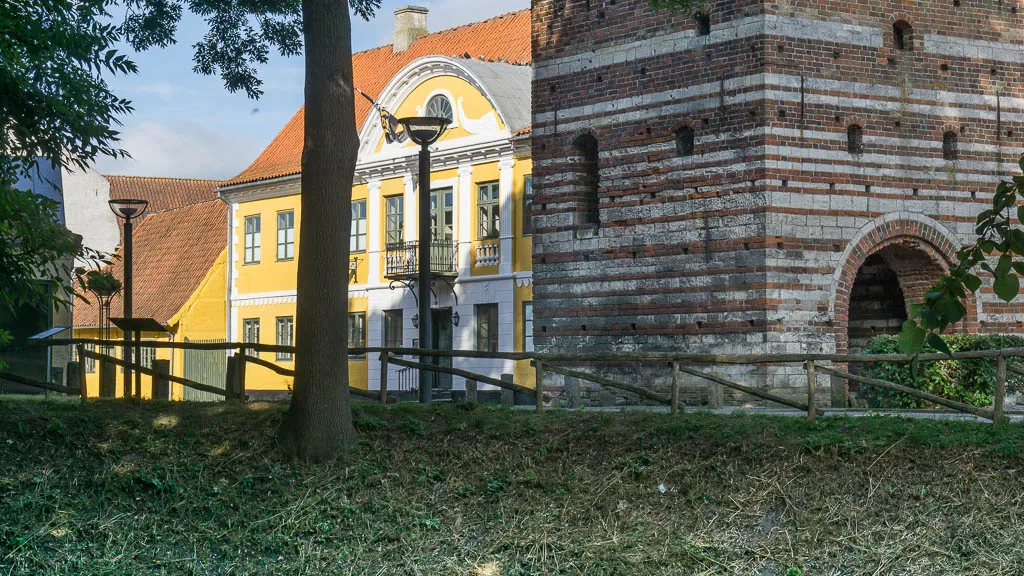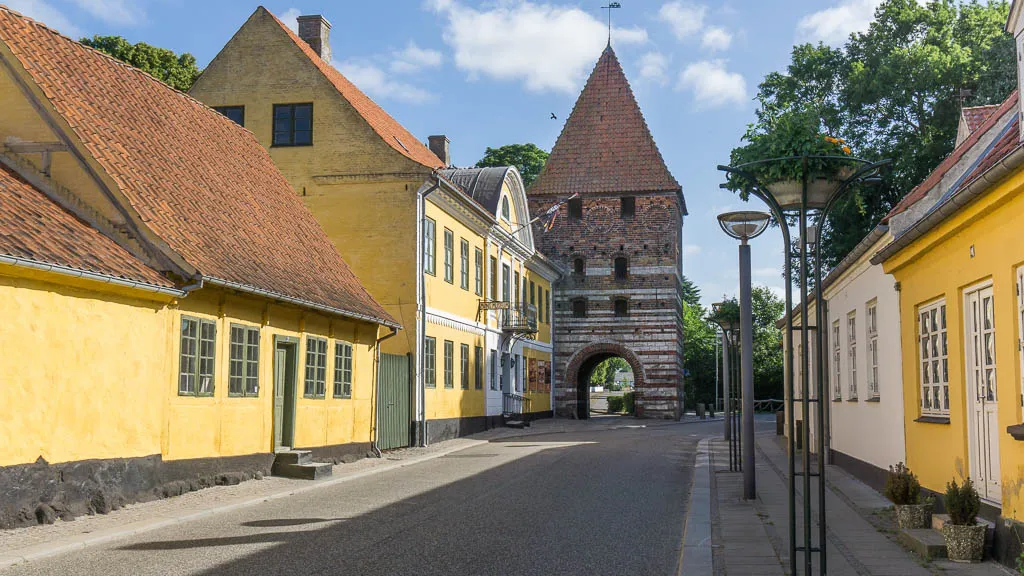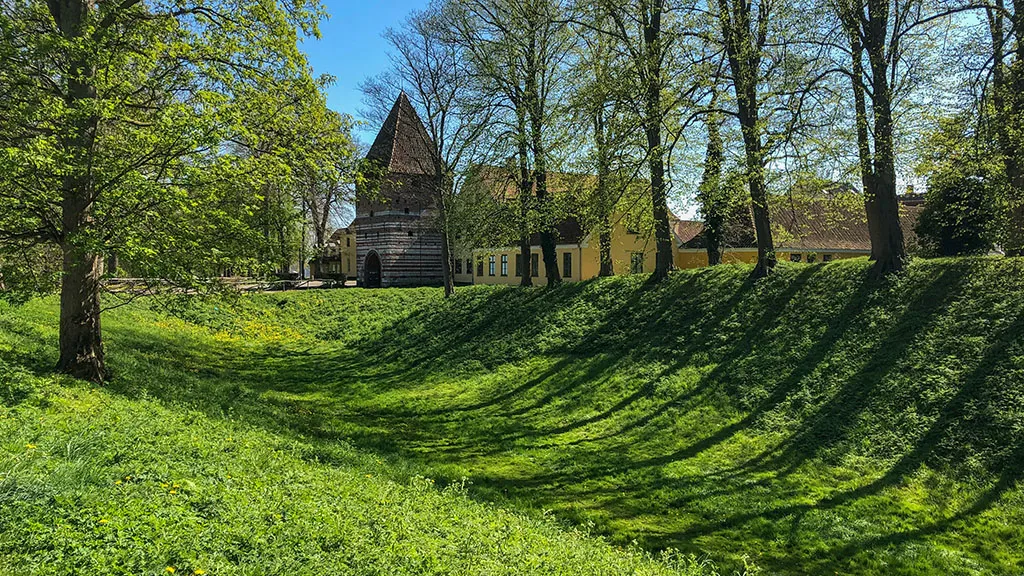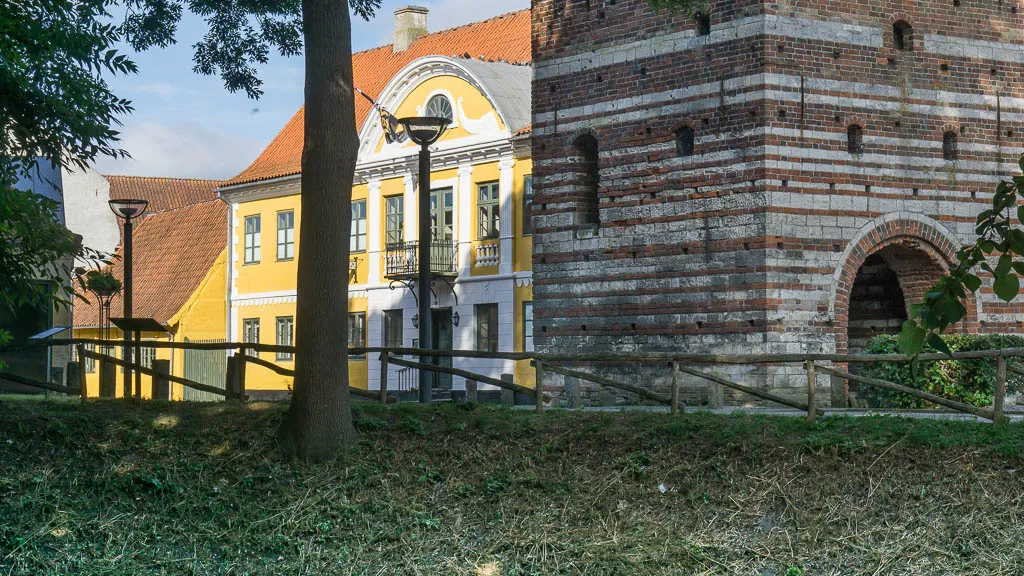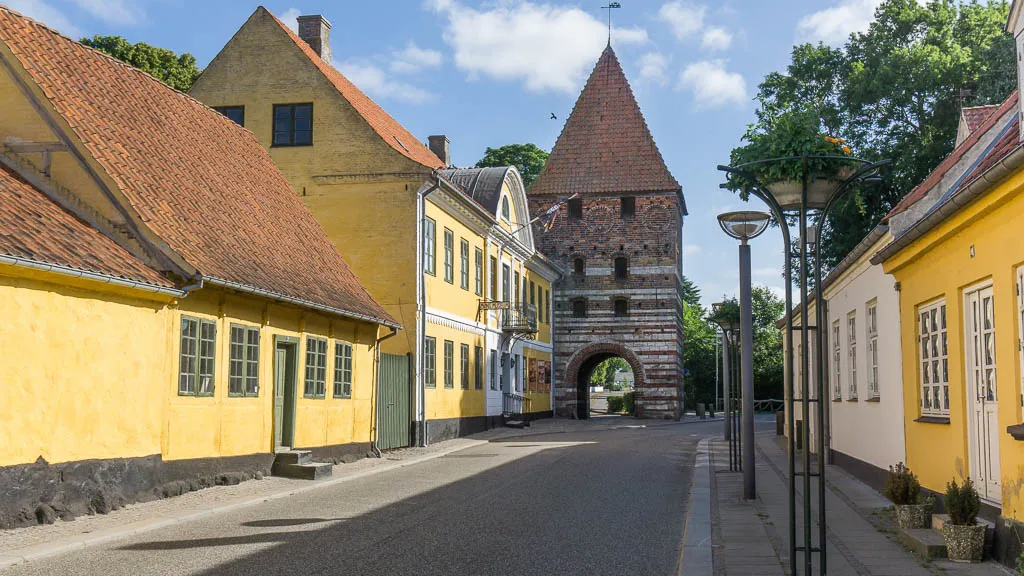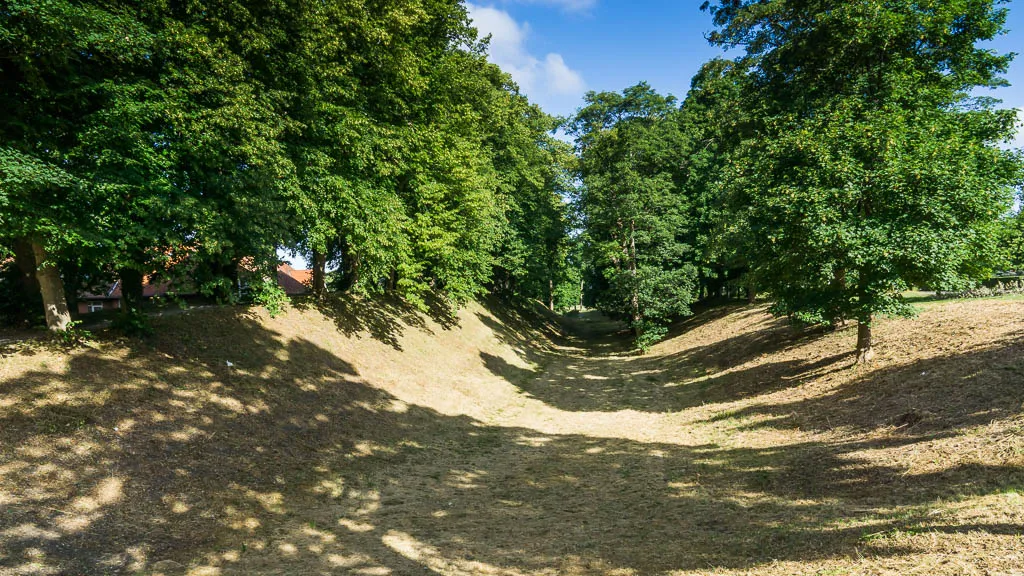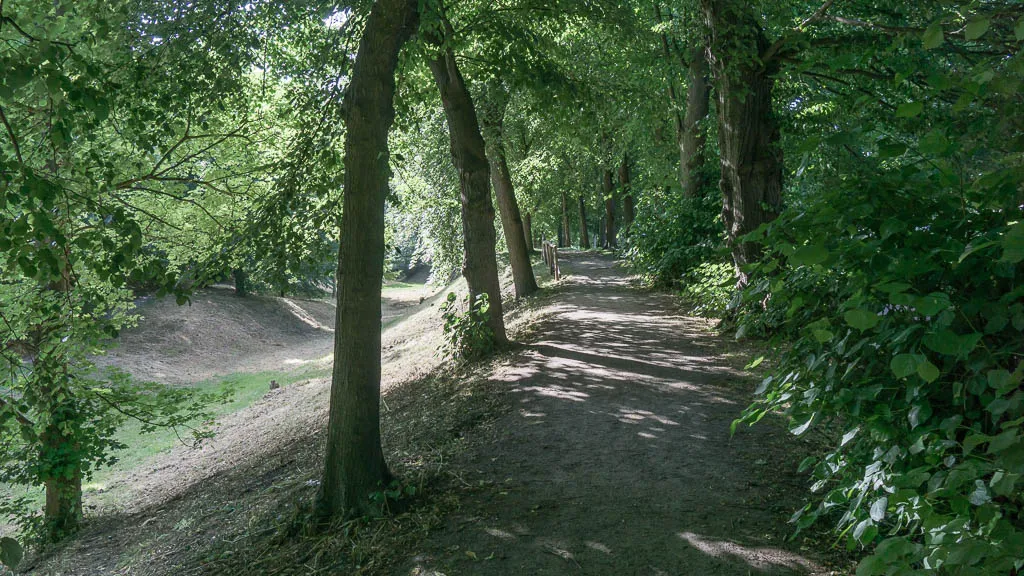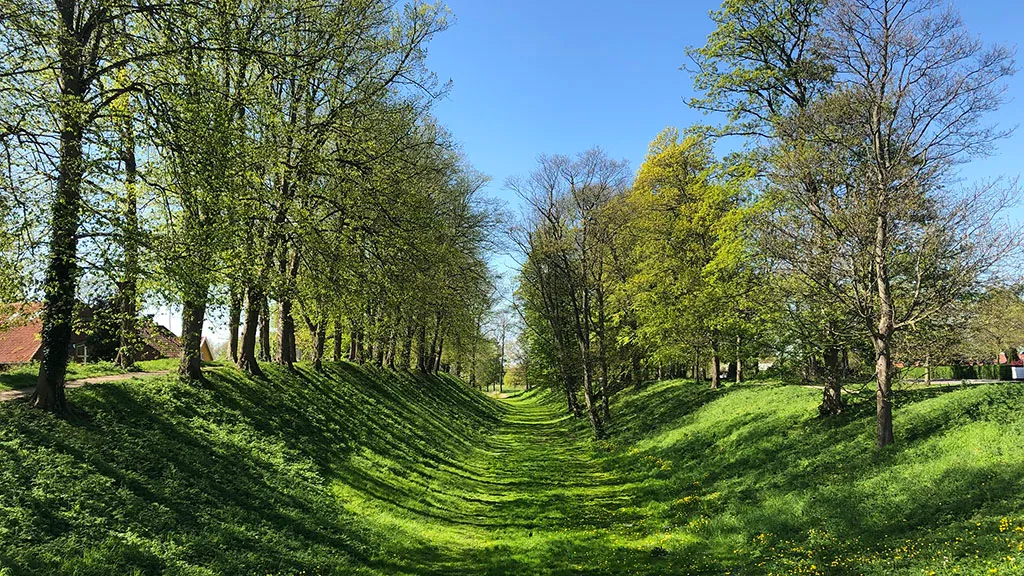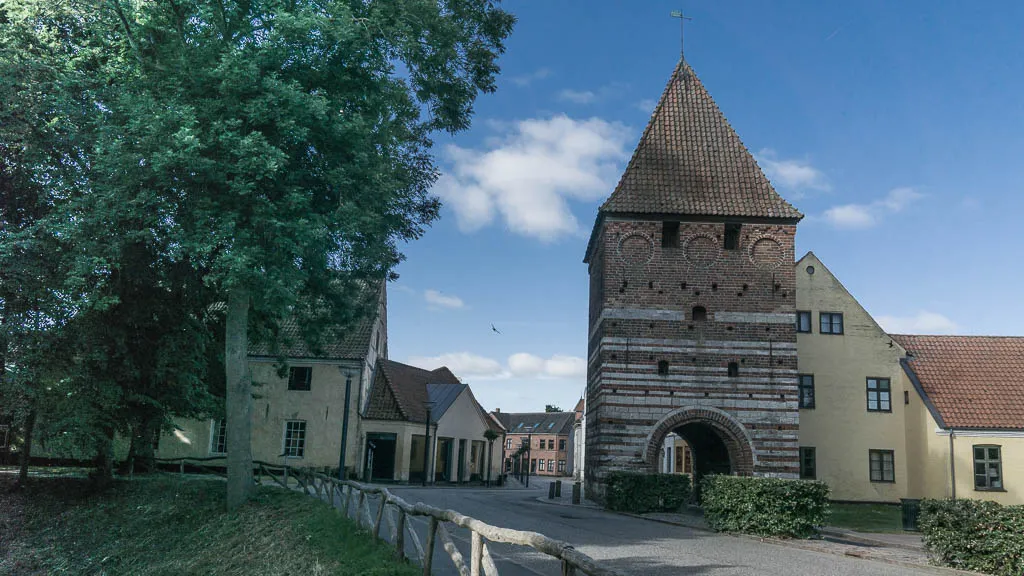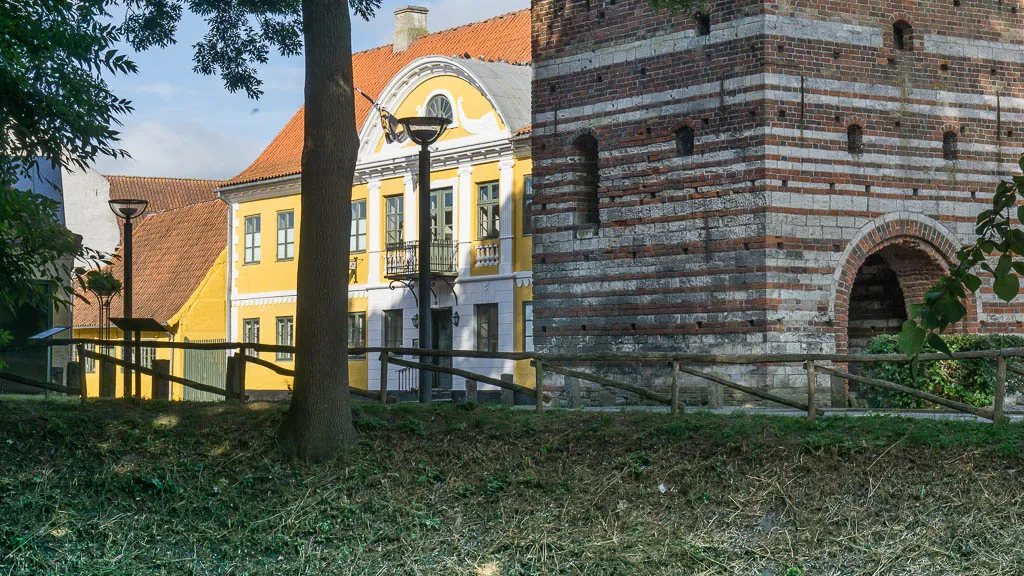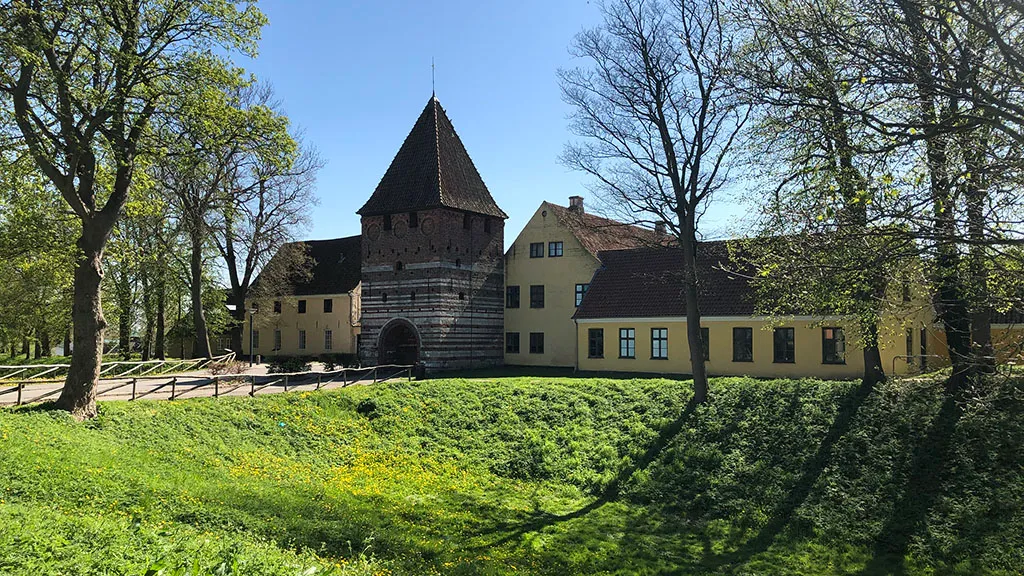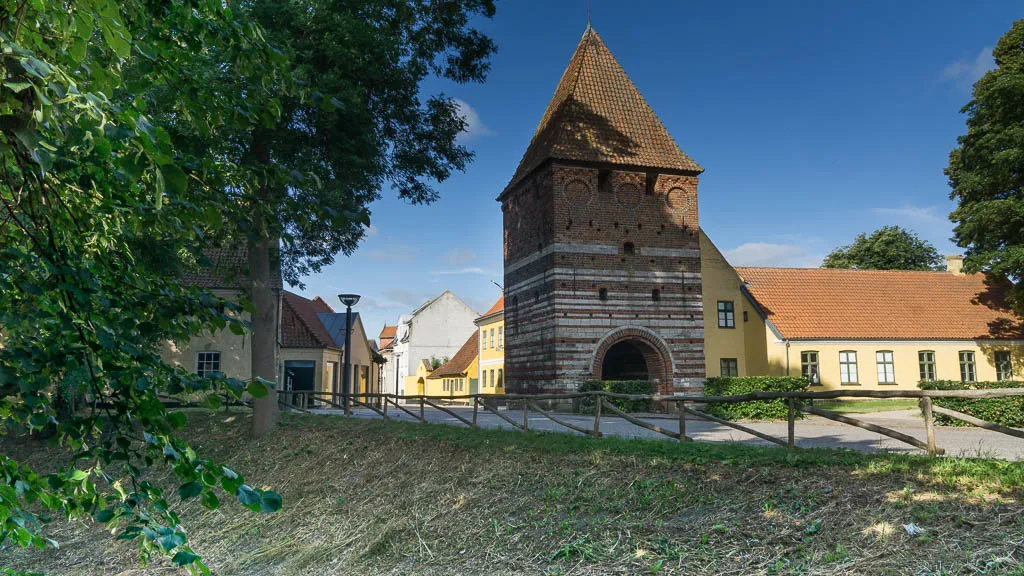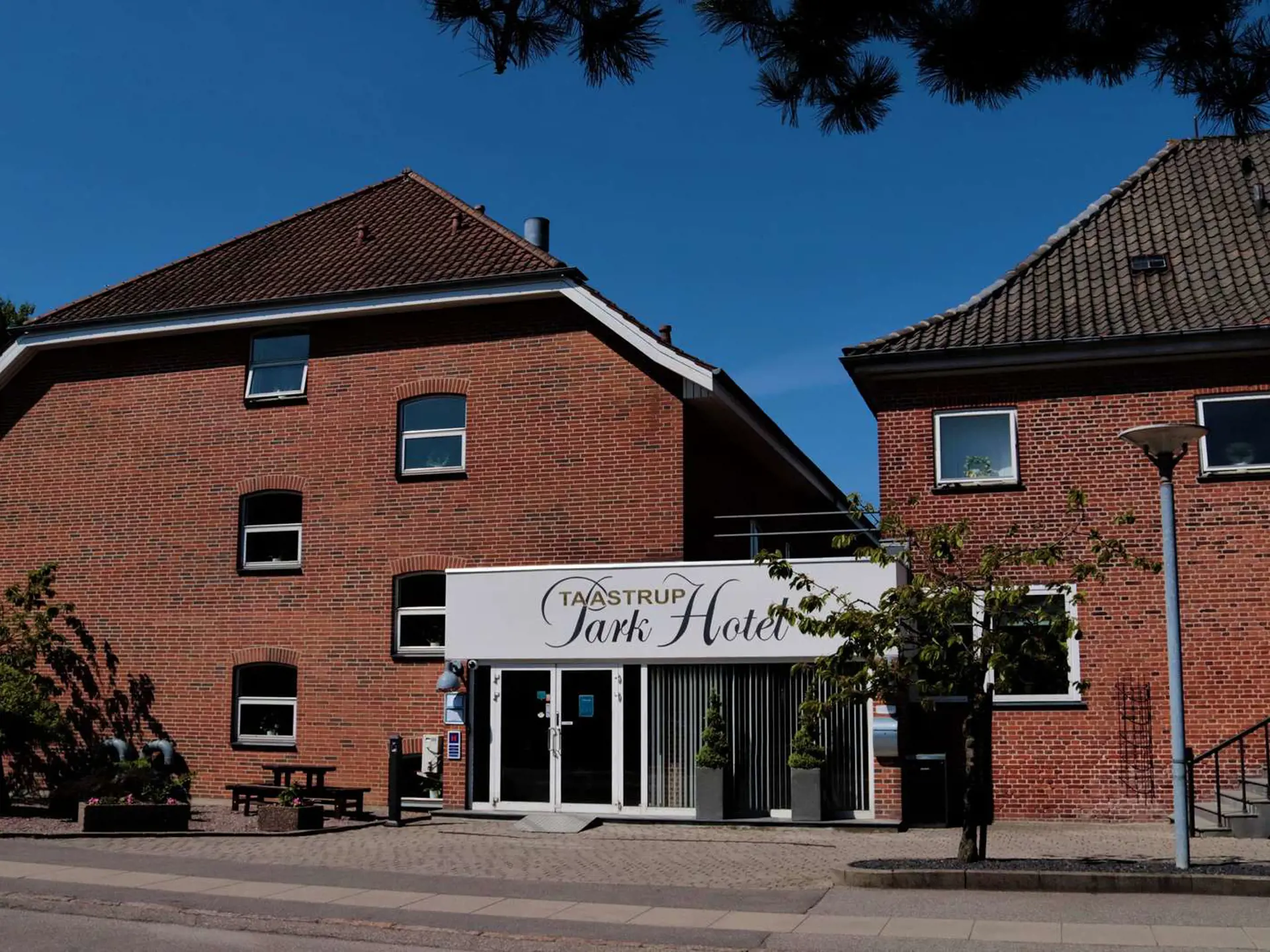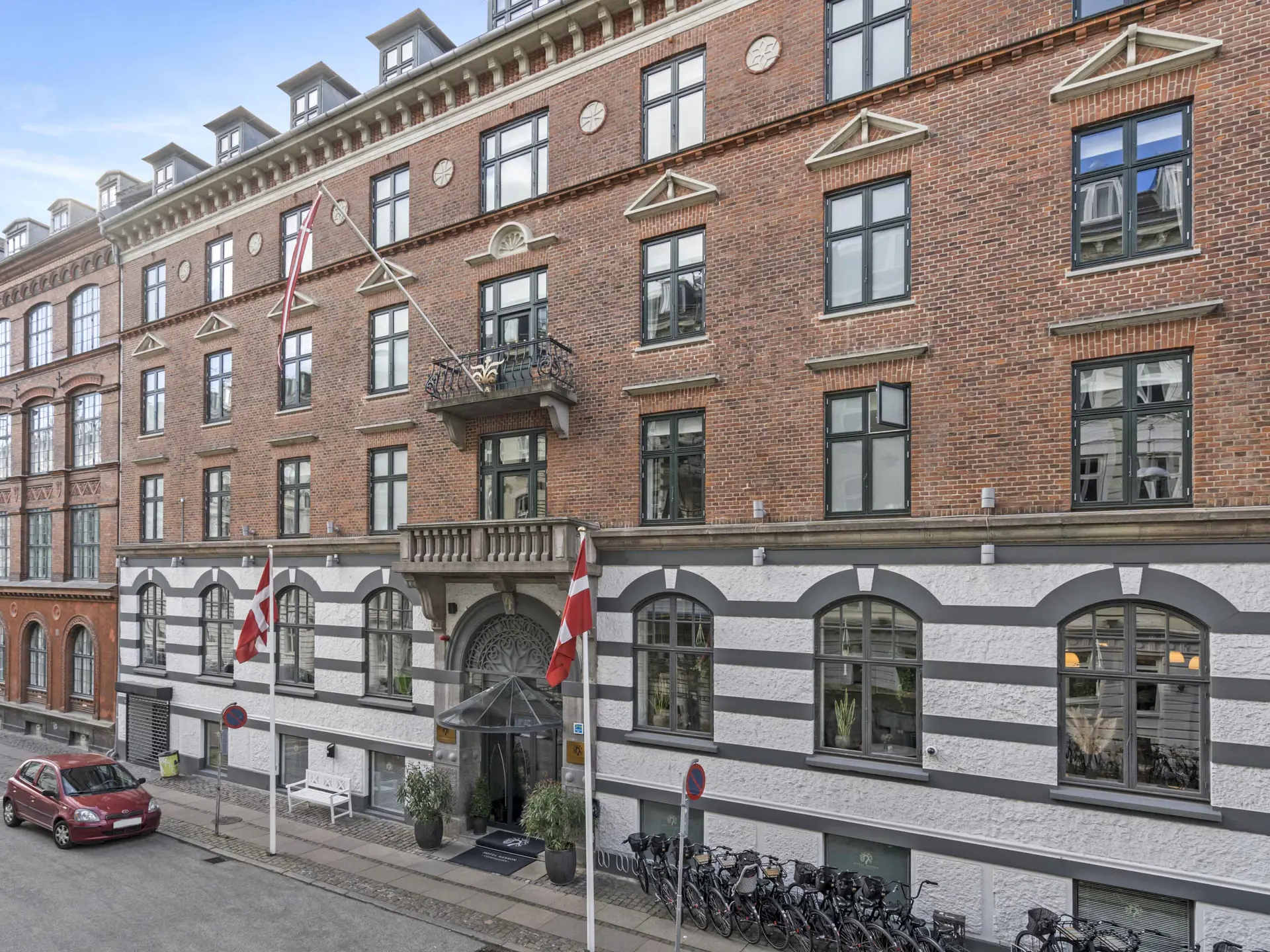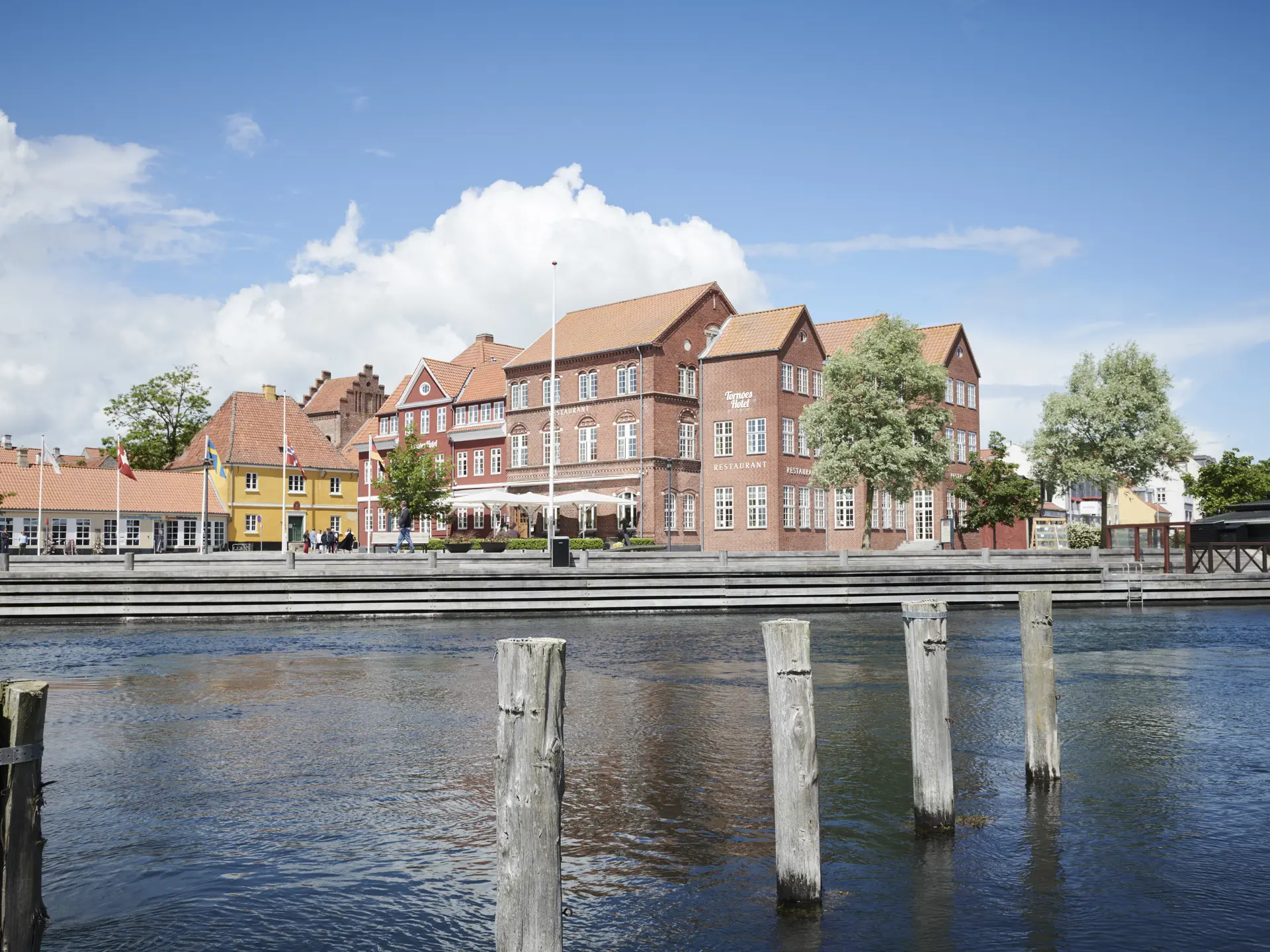The Mill Gate has regained its original height from the late 14th century.
As part of the restoration, the street level was lowered by almost 80 centimeters, as the building's pedestal was hidden under the current street. The aim of the restoration was to ensure the future preservation of the gate - its historical and architectural qualities were highlighted and access for the public was created. Visitors can experience the gate from the inside and gain insight into life, defense, and daily life by moving up through the floors.
In the town of Stege, you can experience the city ramparts and the mill gate, which bear witness to a time when there were fortifications around the city. Many old cities have had these city walls, but while most have been leveled over time, Stege's still exist.
The city walls and the 800-meter-long moat invite you for a delightful walk in green surroundings. The Mill Gate is one of two remaining medieval city gates in Denmark. The gate was built simultaneously with the ramparts and was probably constructed around the year 1400. On one of the chalk stones on the mill gate, you can read the year 1674, which is believed to originate from a renovation where the first floor was converted into a prison. The gate has been renovated several times - the last renovation started in 2020, partly to ensure the gate's future preservation.
The Mill Gate functioned as a goods checkpoint for travelers and farmers, and at night the gate was closed to protect against attacks and theft.
